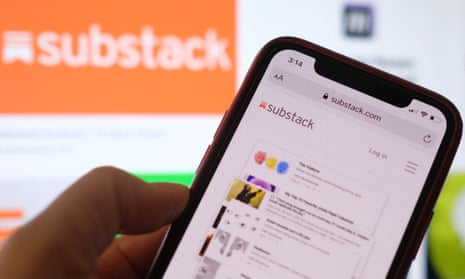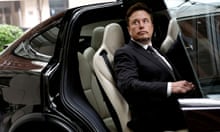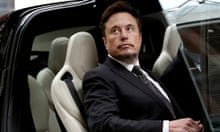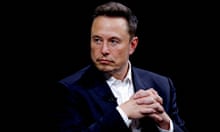A six-day row between Twitter and Substack has come to an uneasy truce after the social media site stopped censoring links and searches for the newsletter platform following the latter’s decision to launch a rival microblogging service.
However, the spat appears to have put an end to Elon Musk’s “Twitter Files” project, after he tweeted then deleted screenshots of a conversation between himself and one of its writers, Matt Taibbi, in which the pair sparred over the censorship.
The conflict started last Wednesday, when Substack announced a new feature, “Substack Notes”, which offers a Twitter-like experience for the company’s user base of newsletter authors and their readers, some of whom are paying subscribers.
“While Notes may look like familiar social media feeds, the key difference is in what you don’t see,” said the Substack cofounder Hamish McKenzie in a post announcing the feature.
“The Substack network runs on paid subscriptions, not ads. This changes everything.
“Here, people get rewarded for respecting the trust and attention of their audiences. The ultimate goal on this platform is to convert casual readers into paying subscribers.
“In this system, the vast majority of the financial rewards go to the creators of the content.”
Many Substack authors rely on Twitter for both reader acquisition and content to write about, leaving the newsletter platform in a painful position if Musk’s chaotic administration of Twitter since his $44bn (£38bn) takeover last October were to lead to the social network’s collapse.
Even before the Twitter sale, Substack had been struggling: the company’s 2021 revenues were negative, according to its financial statements, and it lost $25m in cash overall that year. Last year, it fired one in six staff members and last month it turned to retail investors for a fundraising round, despite having been valued at $650m in March 2021.
In a statement, the company denied it was in difficulty, telling the Guardian: “The financials shared are nearly 18 months old, and the company has transformed materially since then.
“In the period 2020 to 2022, Substack focused on growth. In particular, during this period we made aggressive investments to acquire writers who had large readerships so we could kickstart the growth of the Substack network. This effort brought tens of millions of readers into the system. Now, Substack has more than 35 million active subscriptions, including 2 million paid subscriptions. More than 17,000 people are earning money on Substack, and the top 10 writers earn more than $25 million.”
But the company’s efforts to compete with Twitter brought an immediate response from Musk himself. Over the Easter weekend, any tweet containing a Substack link was algorithmically deprioritised, blocked from being liked or retweeted, and hidden in search. Searches for the term “substack” itself were automatically replaced with searches for the word “newsletter”.
And many users who did manage to find and click on a link to a Substack site reported being warned by Twitter that the service was “unsafe or malicious”.
“We’re disappointed that Twitter has chosen to restrict writers’ ability to share their work,” the Substack founders said in a joint statement.
“Their livelihoods should not be tied to platforms where they don’t own their relationship with their audience, and where the rules can change on a whim.”
Taibbi, one of the most prominent writers on Substack, found himself in the middle of that conflict. Despite working closely with Musk on the Twitter Files – a selective publication of internal Twitter documents authorised by Musk with the apparent goal of demonstrating liberal bias under its former management – he said he would be leaving the platform over the restrictions.
That departure prompted a response from Musk, the company’s first public statement on the matter, days after the first reprisals against Substack had been noticed: Musk falsely accused Taibbi of being a Substack employee (he is not), claimed Substack links “were never blocked” (he later admitted they were temporarily marked as “unsafe”), and accused Substack of “trying to download a massive portion of the Twitter database to bootstrap their Twitter clone”, which Substack’s chief executive has denied in a post on Substack Notes.
The spat appears to be distracting Musk from more pressing concerns at the social network. Over the weekend, users reported that the company’s privacy-focused Circles feature was leaking private user data.
Similar to Instagram’s Close Friends feature, posts shared to a Twitter Circle are supposed to be shown only to other users who have been explicitly added to that Circle. But multiple users, including security researcher Ian Coldwater, found that other users were able to see their supposedly secret posts.
“I made a Twitter Circle with one person in it,” Coldwater said. “Two people I don’t follow saw the tweet & liked it. One of those people doesn’t follow me either. Twitter Circles aren’t private. Don’t post anything you want private in them.”
A request for comment to Twitter was unanswered, save for the company’s automatic reply to all press inquiries: a poo emoji.








